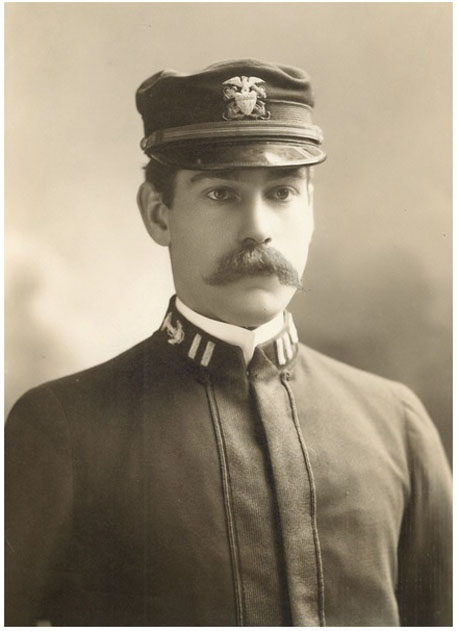In this year that marks the 100th anniversary of the outbreak of the First World War, I would like to pay tribute to some members of my extended family who served in that horrific conflict. This is the second in a series of four profiles. There may be others in my family who served, but these are the ones I know about.

A Philadelphia lawyer, Joseph M. Mitcheson was in active service on the USS Von Steuben during the First World War, serving in every line of duty from senior watch to executive officer.
Joseph McGregor Mitcheson was born in Philadelphia on Oct. 11, 1870, the son of lawyer McGregor J. Mitcheson and Ellen Brander Alexander Bond. His grandparents, Robert Mitcheson and Fanny (MacGregor) Mitcheson, were my three-times great-grandparents. Joseph had a brother, Robert Stanley, who died as a child, and his sister, Mary Frances, married Arthur L. Nunns.
Joseph was active in student athletics at the University of Pennsylvania. He graduated with an arts degree in 1890 and got his law degree in 1895.
He volunteered in the United States Navy during the Spanish American War, entering as a Lieutenant in June 1898, and being honorably discharged two months later.

He was in command of the Naval Militia of Pennsylvania at the outbreak of the First World War, but resigned to enter active service. According to his obituary in the Philadelphia Public Ledger, March 27, 1926, “his interest in the Naval Reserve of Pennsylvania was said to have been the most important factor in preparing that organization to enter the First World War at full strength.”
Joseph enrolled in the Fleet Reserve with the rank of Lieutenant in March,1917, and was promoted to Lieutenant Commander in December. He made nine round trips across the Atlantic aboard the USS Von Steuben, which was used as a troop transport ship, during the war and made nine more crossings after the armistice. Joseph was second in command of the vessel from July to October, 1919, when the ship was taken out of commission. In November of that year, he was promoted to Commander in the Naval Reserve.
He had a varied legal career, working as an assistant solicitor for the City of Philadelphia before the First World War, and for many years represented the Union Traction Company. He did not marry. He died of cirrhosis of the liver at his home at 1608 Locust Street – the house he inherited from his parents – on March 26, 1926, age 55, and was buried in the family plot at St James the Less Church in Philadelphia.
Research notes:
I obtained the basic information about Joseph’s First World War service from newspaper clippings and other background provided to me several years ago by the alumni office of the University of Pennsylvania.
A quick search of various databases on Ancestry brought up additional information. The Pennsylvania and New Jersey Church and Town Records, 1708-1985 revealed his baptismal and burial records. U.S. School Catalogues, 1765-1935 brought up an alumni publication from the University of Pennsylvania that told me he played football and enjoyed photography. Records of Pennsylvania Volunteers in the Spanish-American War, 1898 documented his service in that conflict. The 1910 U.S. Census showed he was living at home that year with his mother and half-sister. Pennsylvania Death Certificates, 1906-1963 revealed that he died of cirrhosis of the liver, a discovery that cast a new light on his life since it raised the possibility of alcohol abuse.
The USS Von Steuben, built in Germany as the passenger liner Kronprinz Wilhelm. It was seized bythe Allies and used as a troop transport ship. The ship’s history, including links to photos of the ship and its crew, can be found at http://www.history.navy.mil/photos/sh-usn/usnsh-v/id3017.htm. A Wikipedia article has additional details.


